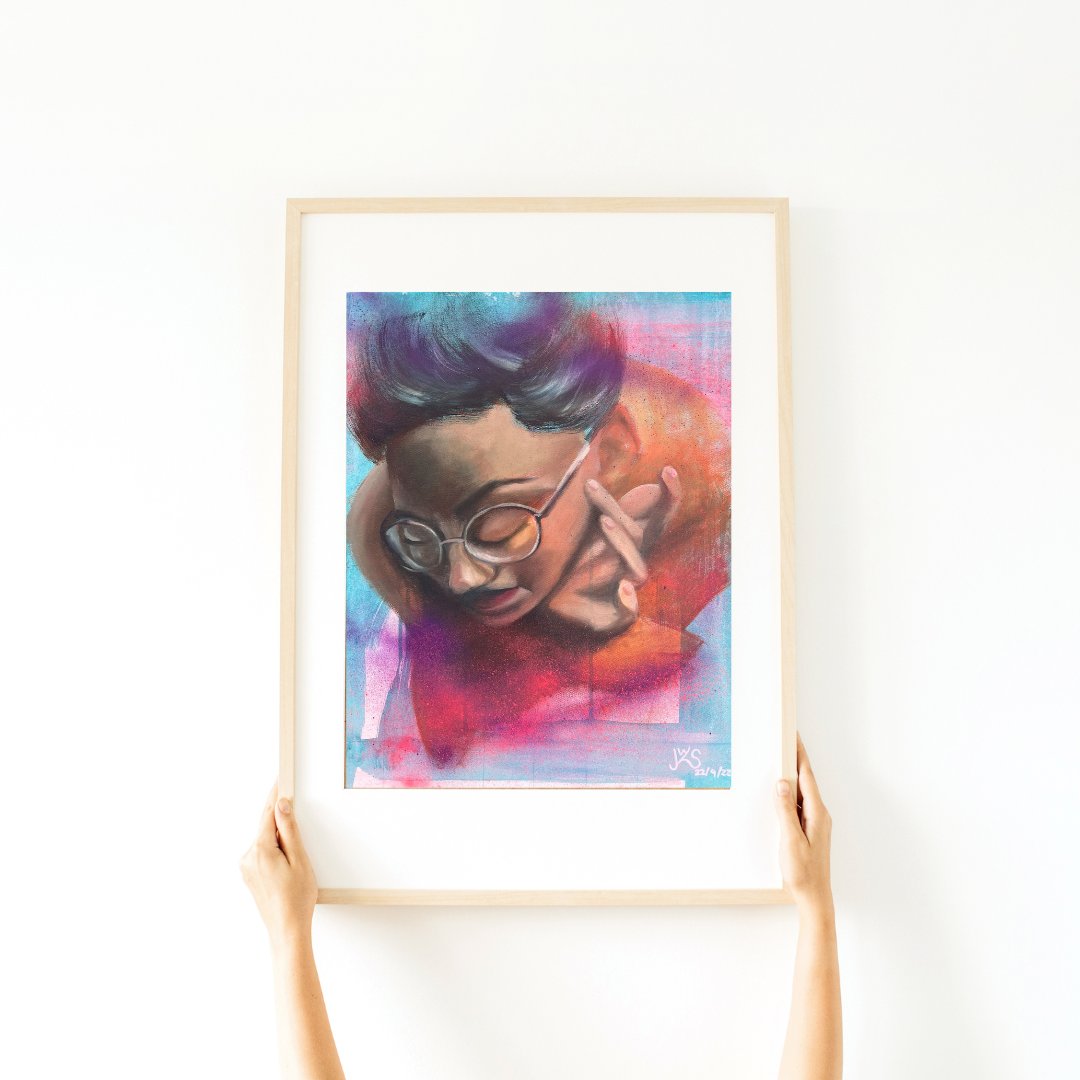
Watercolor - these are the basic techniques you need for painting
Share
Let off steam
Before you start a painting, test the desired color palette and look at small swatches to see how the colors interact with each other - depending on the pigment and painting technique used, this can sometimes turn out quite differently
In the last article I introduced you to the materials you need to start with watercolor painting. Maybe you already have everything you need, want to start, or have already unpacked the box and noticed - it's different than it used to be with the paint box at school.
Why is that? Watercolors and opaque paint boxes have one thing in common: they are water-soluble - and that's about it. Paint boxes are opaque paints (more or less, because the quality of the pigments is usually not that great) - watercolors remain transparent and barely cover anything.
But watercolor can do a few cool things that opaque paints can't - and the colors somehow stay brighter even in broken tones because of their low opacity. Do you remember when you mixed wildly with the paint box at school and the end result had a grayish finish because the mixed colors had lost their luminosity - with watercolor, the translucent paper provides a certain radiance that is unique to watercolor.
Now for the basic techniques that you should simply practice first so that you are confident when painting - with wet-on-wet, for example, the time at which the paper is wet is crucial for the effect you achieve. So that you don't get pressed for time when painting, you simply have to practice again and again and get a feel for the color, the water and the right time.
The basic techniques at a glance
Wet on dry
You mix paint with water and then apply it to dry paper. You can use the paint/water ratio to determine the intensity of the color. You should also practice this from time to time with color exercises to get a feel for the right mixture. Simply paint five levels that you can use as a reference and think about beforehand how much water and how much paint you need for the desired tone value.
Wet in wet
A classic that only really works well with watercolor. You apply very fluidly mixed paint to the previously moistened paper or to a layer of paint on the paper that is still wet. As already mentioned, the timing is important here - there should no longer be a puddle in one place on the paper, but the paper should still be shiny when wet. This will give you the most uniform gradients. With too much water or in puddles on the paper, the water and paint will spread very randomly - this can be beautiful, but only if you are prepared to give up some control.
Dry on dry
Applying thick paint directly from a pan or tube is not usually done with watercolors - it would simply be a waste of paint. With the dry on dry technique, you use an almost dry brush to pick up paint mixed with a little water and brush it onto the paper in a quick motion. The structure of the paper and the rather dry consistency of the paint leave many white spots and create interesting structures. This way, for example, you can create water surfaces with points of light or - on a dried layer of paint - structures in tree bark, stones and rocks.
Dry in wet
Of course, you can also work on a still wet paint surface or on moistened paper with the dry paint application - then the strokes will fade a little and the accents will not be so harsh - but the color will also be a little lighter.
glaze
The technique in watercolor - some people say that watercolor painting only involves glazing and washing. Some books therefore call the first wet-on-dry layer a glaze. It is basically like wet-on-dry, but applied to a layer of paint that has already dried. The transparency of watercolor creates color mixtures without any prior mixing. I mainly use this technique for my portraits. I work with very few colors and the skin tone is created by layering the color.
When glazing, the water/paint ratio is very important. You have to experiment with how transparent the individual layers need to be so that both the white of the paper and the lower layers show through. Very thinly applied first layers can sometimes disappear, even though watercolor doesn't actually cover.
Lavar
Here you apply a color mixture that is very rich in pigment and let it run out with the addition of water - this way you have no color edges but rather smooth, soft transitions. Transitions between one or more colors are also possible. It is important to use water that is as clean as possible so as not to contaminate the colors.
You can also use a brush and water to dissolve already dried layers of paint and edges (this is called washing out). If you then dab the brush on a paper towel and roll the almost dry brush over the painted area, you can remove paint from the paper again - this way you can lighten areas that are too dark and loosen up harsh edges - but be careful, too much water causes color bleeding. In classic watercolor painting, they are frowned upon - today they are often used as a stylistic device.
Here are two more pictures with comments about the “little mistakes” I made. We know that in art there are no mistakes, only “happy accidents” - whatever you like is allowed.

|
 |
When using the wet-on-wet technique on the left, I was impatient and added the other color too quickly. On the right, the first color was only slightly damp. When using the wash, it is important to only work in the direction in which the color should flow - otherwise this so-called bleeding will occur.
Please let me know in the comments how you liked the article? Have you been painting with watercolors for a while? Or are you still a beginner? What do you still find difficult about watercolor painting? Feel free to tell me what you want me to explain in another post.
Stay creative and until next time,
Sabrina



